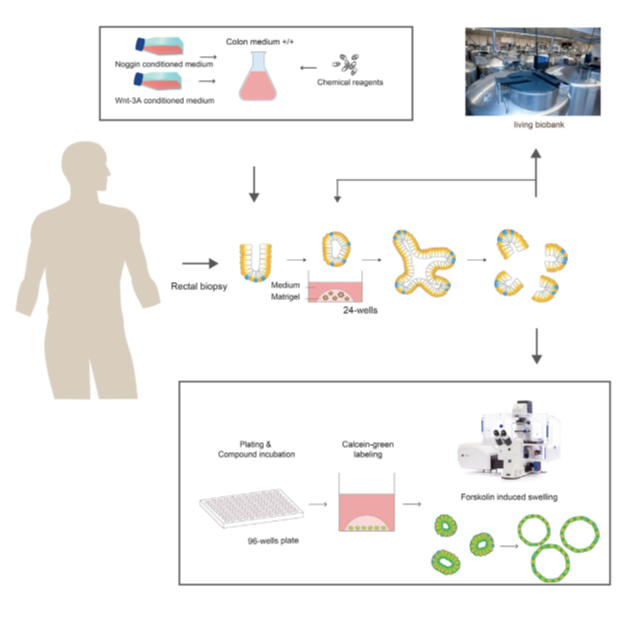Scientific publications
April 7th, 2021 – Interview study on the perspectives of people with CF on organoid biobanking published
As mentioned in the previous newsletter, another goal of HIT–CF is to install a permanent biobank containing the organoids that were cultured for the project. To learn more about how people with CF feel about their tissue being stored and used for research and drug development by different parties, how they perceive ownership and what their wishes are concerning feedback, our ethics collaborator Mike Lensink performed 17 semi–structured interviews with people with CF. His findings will be used to inform the ethical framework and governance of the HIT–CF biobank. You can read the full article here.
November 17th, 2020 – Interview study on the perspectives of professionals on organoid biobanking published
In addition to the perspectives of people with CF, Mike also wanted to know how professionals think about organoid biobanking. Therefore, he conducted 21 semi-structured interviews with professionals in the field of organoid technology, biobanking or CF research and care. You can read the full article here. A lay summary of the paper can be found here.
April 16th, 2020 – The “Protocol for Application, Standardization and Validation of the Forskolin-Induced Swelling Assay in Cystic Fibrosis Human Colon Organoids” has been published in STAR Protocols, a Cell press journal.
The protocol, available online, describes the isolation, handling, culture of, and experiments carried on organoids in the context of CF. In CF, the functioning of proteins called cystic fibrosis transmembrane conductance regulator (CFTR) is impaired. The forskolin-induced swelling assay in used to measure the activity of CFTR proteins in organoids, before and after treatment with CFTR modulators. Implementation procedures and validation experiments are described, and representative CFTR genotypes are tested.
February 12th, 2019 – Rectal organoids enable personalised treatment of Cystic Fibrosis
Organoids show a high correlation between drug effects in the lab and the clinic, enabling us to identify responders to CFTR modulators. Read more about it in this exciting article published by the Utrecht group
Share this page:


